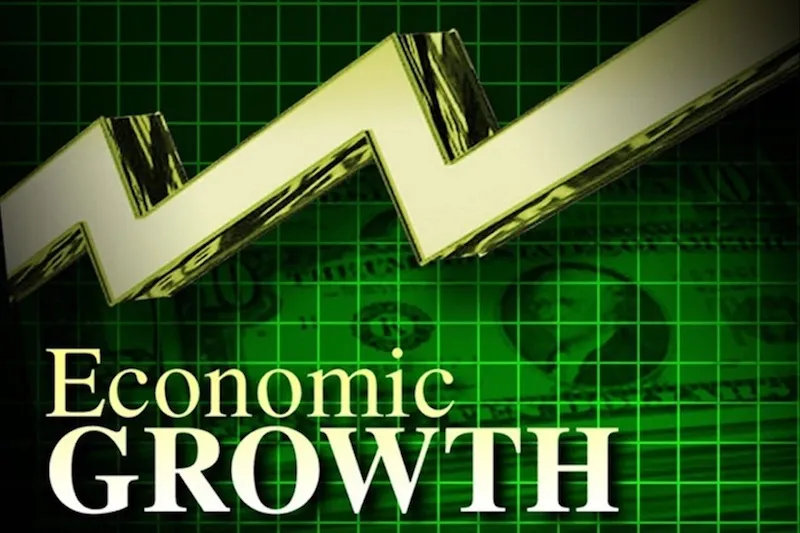Nigeria’s growth rate to increase to 4.4% in 2025 – AfDB
The growth rate of Nigeria and other West African countries is projected to rise from an estimated 3.6 per cent in 2023 to 4.2 and 4.4 per cent in 2024/2025. The African Development Bank (AfDB) Vice-President and Chief Economist, Kevin Urama, said this at Thursday’s highlight of the African Economic Outlook 2024. The News Agency […]

FILE PHOTO
The growth rate of Nigeria and other West African countries is projected to rise from an estimated 3.6 per cent in 2023 to 4.2 and 4.4 per cent in 2024/2025.
The African Development Bank (AfDB) Vice-President and Chief Economist, Kevin Urama, said this at Thursday’s highlight of the African Economic Outlook 2024.
The News Agency of Nigeria reports that the report was inaugurated on the sidelines of the bank’s ongoing 2024 Annual Meetings in Nairobi, Kenya.
The theme of the meeting is: ”Driving Africa’s Transformation: The Reform of the Global Financial Architecture. ”
- Insecurity: Doctors at Kano paediatric hospital down tools
- Youths chase out C/River traditional ruler from palace
”Growth is projected to pick up in West Africa, rising from an estimated 3.6 per cent in 2023 to 4.2 per cent in 2024 and consolidating at 4.4 per cent the following year.
”This is an upgrade of 0.3 percentage points for 2024 over the January Macro Economic Outlook (MEO) projections, reflecting stronger growth upgrades in the region’s large economies (Côte d’Ivoire, Ghana, Nigeria, and Senegal),” he said.
Urama said that African economies had continued to remain resilient amid multiple shocks, adding that their average growth was projected to stabilise at 4.0 per cent in 2024–25, against 3.1 per cent estimated in 2023.
He said that the average real Gross Domestic Product (GDP) growth was estimated to have slowed from 4.1 per cent in 2022 to 3.1 per cent in 2023.
He attributed the decline to various factors, including persistent high food and energy prices, which reflected the sustained impacts of Russia’s invasion of Ukraine.
He said that climate change, extreme weather events that affect agricultural productivity and power generation, and pockets of political instability and conflict in some African countries were also to blame.
According to him, the real GDP growth is projected to rise to 3.7 per cent in 2024 and 4.3 per cent in 2025, exceeding 4.1 per cent in 2022.
”This is as most of the effects of the above factors weighing on growth in 2023 fades away.
”The projected rebound in Africa’s average growth will be led by East Africa (up by 3.4 percentage points) and Southern Africa and West Africa (each rising by 0.6 percentage points).
”Critically, 40 countries will post higher growth in 2024 relative to 2023; 17 economies are projected to grow by more than five per cent in 2024 and may rise to 25 in 2025.
”This is remarkable, and Africa will retain its 2023 ranking as the second fastest growing region after Asia in 2024-25 with projected GDP growth exceeding the global average of 3.2 per cent in 2024,’’ he said.
According to Urama, average growth in oil-exporting countries is expected to decline from an estimated 3.7 per cent in 2023 to 3.5 per cent in 2024 but could pick up to four per cent in 2025.
”The projected slowdown in 2024 reflects lower oil production targets set by the Organisation of the Petroleum Exporting Countries (OPEC).
”Also, the lower growth projections in South Sudan following the vandalising of an oil pipeline due to the ongoing conflict and uncertainty over new mechanisms for Angola’s oil exports following its exit from OPEC.
”Meanwhile, growth in other (non-oil) resource-intensive economies on the continent is estimated to improve strongly from 0.3 per cent in 2023 to 2.7 per cent and consolidate at 3.3 per cent projected for 2024 and 2025.
”The sharp increase in growth will be driven largely by a rebound in China’s demand for metals and minerals linked to expansions in smart grids and construction”, Urama said. (NAN)
